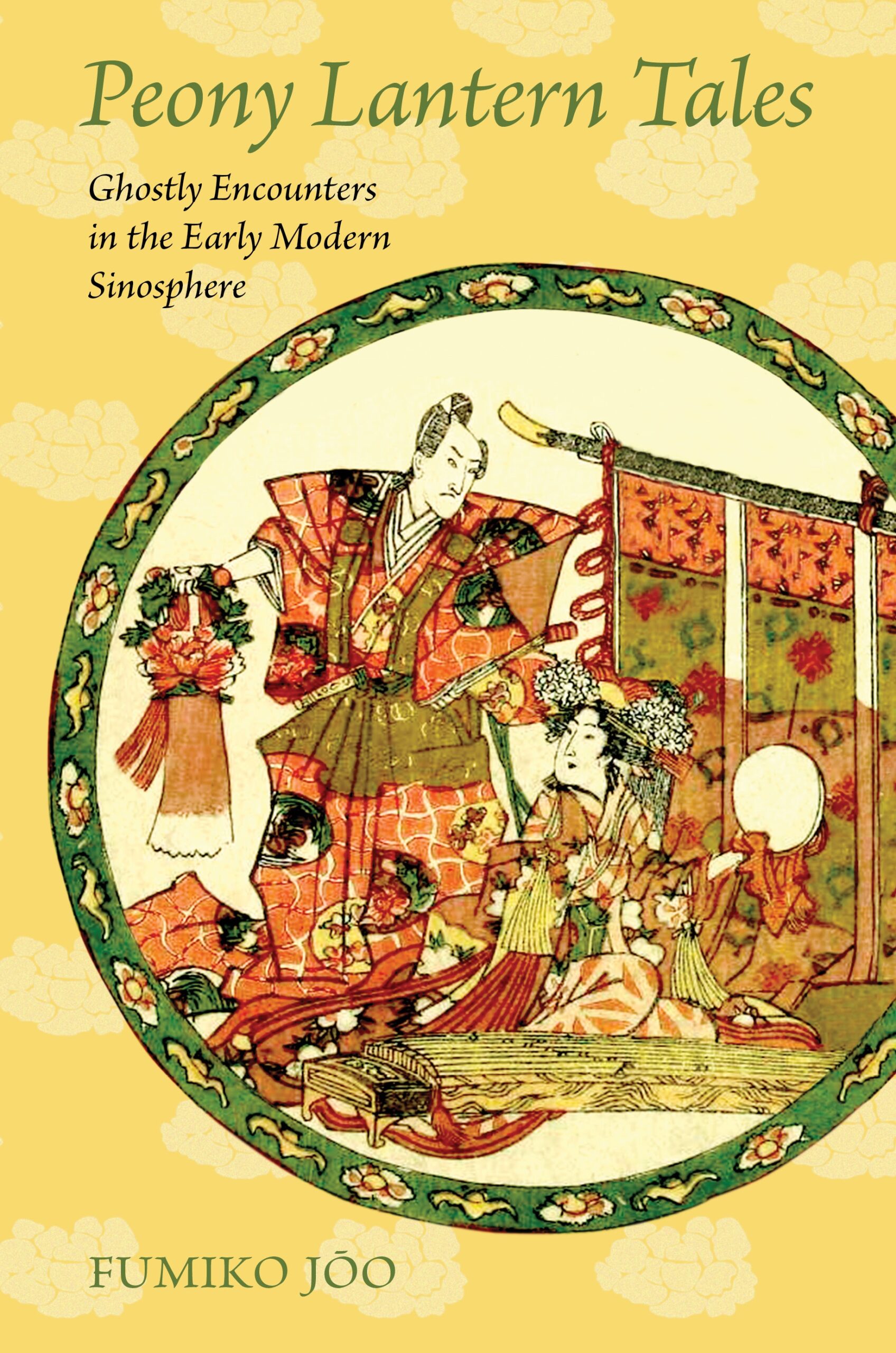Peony Lantern Tales: Ghostly Encounters in the Early Modern Sinosphere
- About the Book
-
“The Story of the Peony Lantern” by the Chinese author Qu You (1347–1433) traveled across lingual, cultural, and geopolitical borders in early modern East Asia. The original tale, set in fourteenth-century Ningbo, China, is one of ghostly seduction and murder, but it continued to transform as it traveled from city to city and in its encounters with characters from other texts, publishing networks, and countless readers in the Sinosphere. Fumiko Jōo closely analyzes the cultural and societal structures that framed how a seductive female ghost was reconceived in texts, sites, and objects, both locally and trans-regionally. The myriad transformations of “The Peony Lantern” explain the context and the structures of knowledge production and practice where depictions of female sexuality, death, and morality emerged and were remade.
Jōo incorporates a breadth of sources, from local gazetteers to theater ephemera, to shed light on the cultural life of objects, the collective memory of vanished sites, and the public’s desire to encounter the phantom. She examines the historical moments and sociocultural spaces where Peony Lantern narratives and their writers thrived, following the tale as it moved from Hangzhou literati in the twelfth to fourteenth centuries to an early nineteenth-century group of Edo playwrights, kabuki theater producers, and publishers. Readers will welcome Jōo’s exploration of the tale’s transformation by local scholars of Ningbo in the eighteenth century and the female classical writer Arakida Reijo (1732–1806) and her Ise literary circle. The key sites of literary activity for the stories, according to Jōo’s illuminating analyses, are not modern nation-states but networks of literati connected by class, gender, and regional affinities.
This volume includes complete translations of Qu You’s original “Peony Lantern” and two later adaptions, “The Double-Fish Fan Pendant” by Xiong Long Feng Publishing House and Arakida’s “Floating Weeds.”
- About the Author(s)
-
Fumiko Joo, Author
Fumiko Jōo is associate professor of Asian studies in the Department of Classical and Modern Languages and Literatures at Mississippi State University.
- Reviews and Endorsements
-
- Jōo’s research in primary sources in Chinese and Japanese across multiple genres, as well as secondary sources in English, Chinese, and Japanese, is impeccable. The concept of the Sinosphere has been useful in studies of modern and contemporary literature that seek to overcome the conceptual limits of imagining discrete national literatures; her book is a potent demonstration of what the Sinosphere could mean in the fifteenth–nineteenth centuries.
—Rania Huntington, University of Wisconsin-Madison - In this pathbreaking volume, Jōo draws on materials in archives in both China and Japan to present us with a kaleidoscope of historical moments, cultural and linguistic spaces, and literary and performative genres. It is a rare scholar who can so comfortably mobilize solid training in Classical Chinese, Classical Japanese, modern Chinese, and modern Japanese, bringing vividly to life the journey of a single work across the Sinosphere, and the rich particularity of its absorption into local contexts. Her book shows us, in the most brilliant way, just how much we have to gain from approaches that take as their point of departure the vast, variable landscape of the Sinosphere.
—Satoko Shimazaki, University of California, Los Angeles
- Jōo’s research in primary sources in Chinese and Japanese across multiple genres, as well as secondary sources in English, Chinese, and Japanese, is impeccable. The concept of the Sinosphere has been useful in studies of modern and contemporary literature that seek to overcome the conceptual limits of imagining discrete national literatures; her book is a potent demonstration of what the Sinosphere could mean in the fifteenth–nineteenth centuries.





